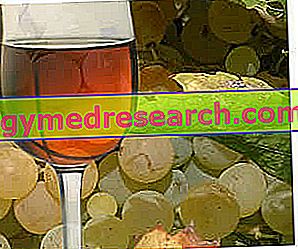Edited by Marino Macchio
Finally, science has officially come out into the open by providing direct evidence on the anti-aging effect due to regularly practiced physical activity at any age, stating that it prevents cellular senescence of circulating leukocytes or white blood cells and in the vessel wall

BUT HOW DOES IT WORK?
Doing physical activity regularly encourages our body to produce a very important enzyme : the telomerase enzyme .
Obviously, to better understand what it is, it is necessary to dwell on what the TELOMERO is and where it is.
The telomere is the terminal region of the chromosome, from which the name derives, composed of highly repeated DNA that does not encode any protein product. It has a crucial role in avoiding information loss during chromosome duplication. In fact, DNA polymerase is not able to replicate the chromosome until its termination; if there were no telomeres, which are then shortened to any replication, DNA replication would result in a significant loss of genetic information at all times. There is evidence that this progressive shortening of telomeres is associated with the aging of the cell and the entire organism. Telomeres, however - especially at the level of the germ cells and of the somatic ones with a high rate of replication (white blood cells) - are extended by the enzyme telomerase, in the absence of which at each replication the human telomeres would shorten a certain number of pairs of bases until they run out.
RESEARCH
A team of researchers has measured the extension of telomeres in blood samples taken from a group of professional sportsmen, comparing them to those of people of the same age and in good health, non-smokers.
RESULTS
Regular physical activity has beneficial effects of haemodynamic, metabolic and anti-inflammatory, all largely mediated by the vasoprotective effect induced by the exercise itself. However, the molecular mechanisms underlying this effect are not known. Recently Werner and colleagues have verified the hypothesis, both on the murine model and in humans, that telomeres and their regulatory proteins, known from carcinogenic studies to play a role of primary importance in the mechanisms of aging and cell survival, may be involved in the vessel-protection induced by physical activity.
In the trained subjects, the authors demonstrated an increased telomerase activity, overexpression of telomere-stabilizing proteins and reduced expression of the main cell cycle inhibitors. Finally, trained middle-aged subjects showed reduced telomere length in comparison to untrained controls.
The authors conclude that regular exercise induces overexpression of telomere-stabilizing proteins both at the vascular level and on circulating cells. These effects, which see TERT and eNOS as central mediators, exert a protective effect against vascular stress-induced oxidative apoptosis and induce a slowing down of the phenomenon of telomere erosion, which can also be seen on circulating cells. This data sheds light for the first time on the molecular mechanisms underlying the vasoprotective effect, and not only, induced by regular physical activity.
Exercise prevents cellular senescence in circulating leukocytes and in the vessel wall
ANTI AGE EFFECT
The result is that long-term physical activity activates telomerase, even in the cells examined (leukocytes or white blood cells). In the study, telomere loss was particularly reduced in older athletes, who had been exercising for many years. "It is the direct proof of the anti-aging effect of physical exercise", stated Ulrich Laufs, one of the authors of the study.2
Conclusions: Physical activity (moderate and practiced constantly) can even be free and above all without contraindications, it is the only true elixir of LONG LIFE.



